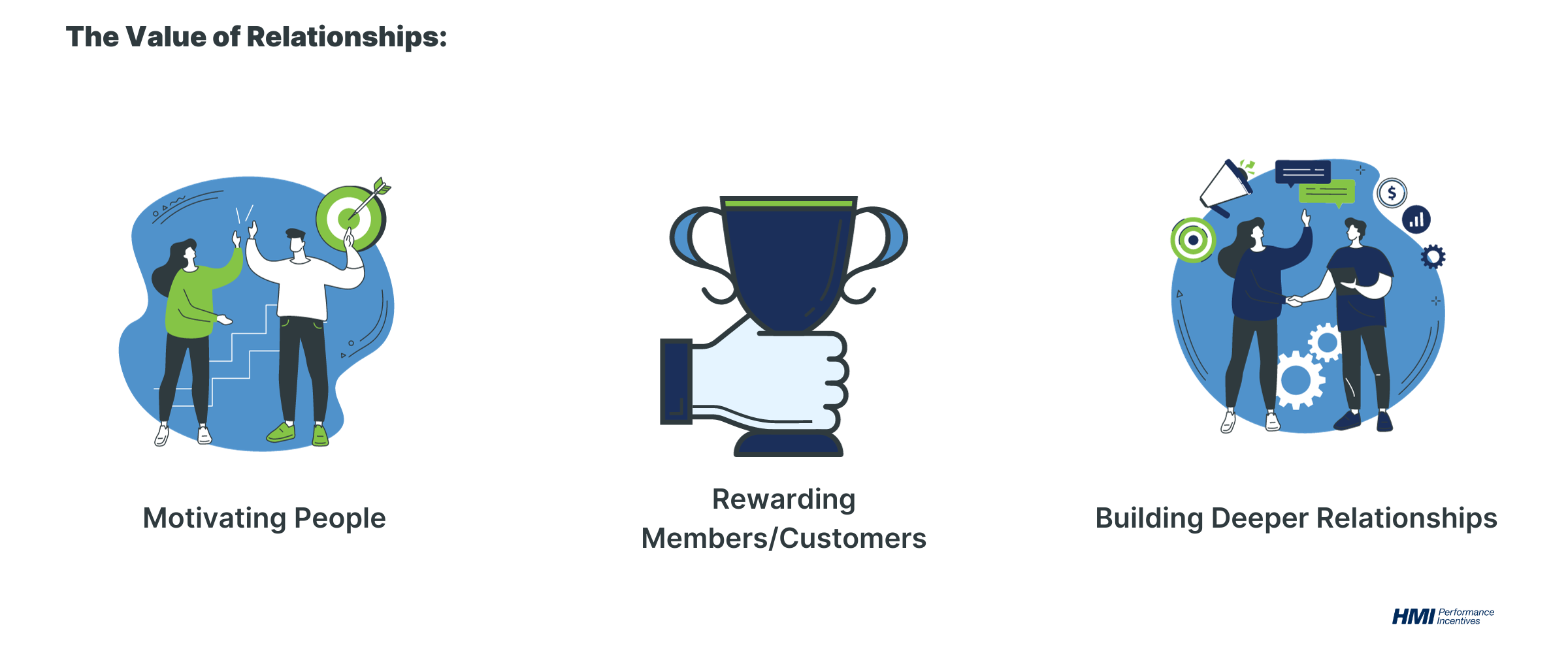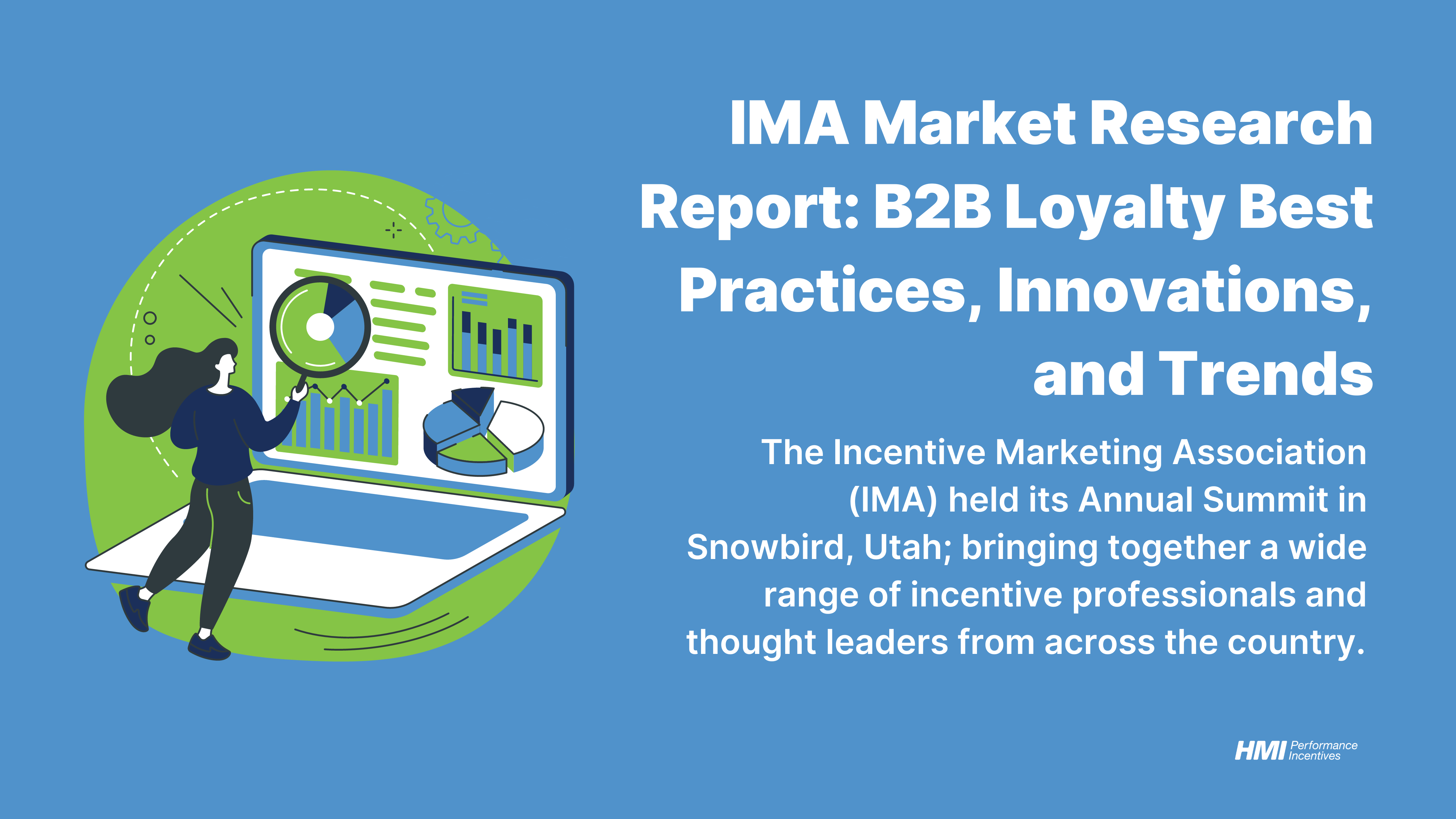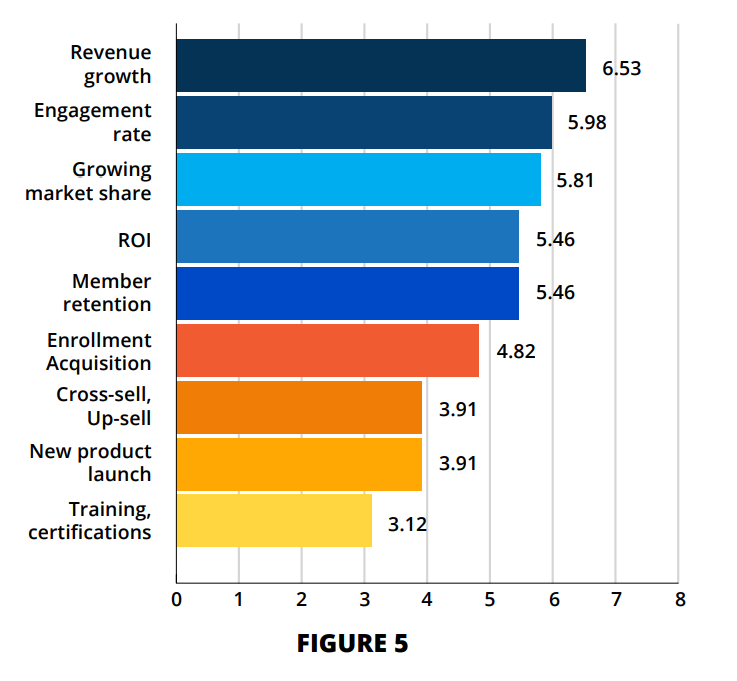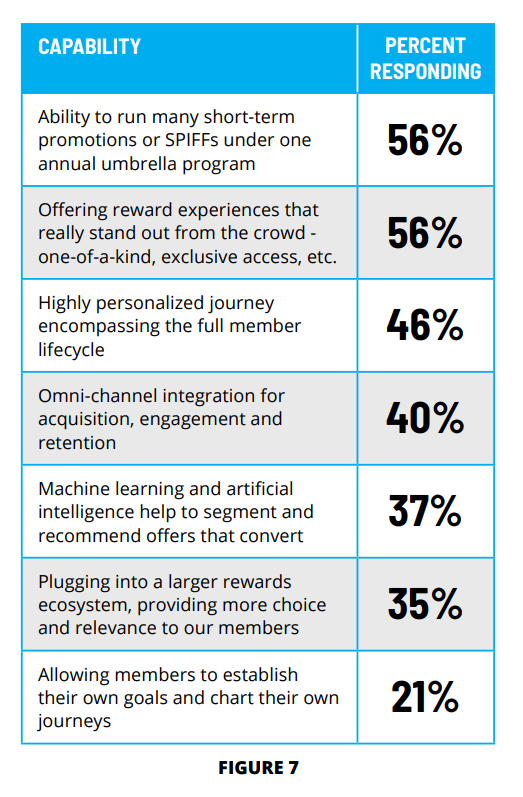Earlier this year, the Incentive Marketing Association (IMA) held its Annual Summit in Snowbird, Utah. This event brought together a wide range of incentive professionals and thought leaders from across the country. The goal was to discuss the state of the incentive industry and B2B loyalty programs. Also discussed were the current trends that are impacting the space.
Free Download: B2B Customer Loyalty eBook
The three-day conference featured many informative presentations on the latest industry research. I walked away with practical takeaways and actionable insights. Many of theses could be worth incorporating into our corporate strategy.
But without a doubt, one of the highlights for me was leading a session on a market research project. This project was conducted with fellow IMA members and led by Chris Galloway.
The research was titled “Emerging Best Practices and Innovation in B2B Incentive and Loyalty Programs”. It was commissioned by the Incentive & Engagement Solution Providers (IESP), an internal working group within the IMA.
The goal of this group is to highlight current best practices in the execution of B2B loyalty programs. It also presents first-hand the expectations of incentive solution customers and designers. Most importantly, the research covered the evolving trends and innovations in the loyalty incentives industry.
There’s certainly a lot to unpack from what was uncovered during the research process. Below are some of the highlights:
Long-term Focus and The Value of People
It was surprising to hear that respondents remain focused on the long-term goals and strategic impact of their B2B programs. Despite the macro environment, current customers and designers were not looking to maximize short-term gains.
Instead, they continue to evaluate their programs’ lifetime value. This was evident in the Top Program Objectives that respondents cited:
- Motivating people/customers to achieve greater results for our organization
- Recognizing and rewarding members/customers for their continued loyalty to the brand
- Building deeper relationships with our most important business drivers

Each of these objectives suggests establishing stronger connections at the personal level. “Motivating people”, “Rewarding members”, and “Building deeper relationships” all point to an important fact about key program stakeholders.
They all have identified the human element of their programs as the single most important value driver.
KPIs Over ROI
And there was another revelation from the research. Customers and designers are highly attuned to their programs’ specific KPIs.
Sure, “Return on Investment” did make it onto the list of Top Key Performance Indicators. However, it only ranked fourth, and was sandwiched between a number of more targeted metrics:
- Revenue Growth (annual, quarterly, etc.)
- Engagement Rate (active program behaviors)
- Market Share Growth (share of wallet)
- Return on Investment
- Member Retention (reduced turnover)
- Enrollment/Acquisition
This suggests that these B2B loyalty program stakeholders are not just in search of more “bang” for their program “buck”. Rather, they’re focused on the strategic goals that are unique to their business.
These results also indicate an awareness about B2B loyalty programs. In fact, they can achieve many of these varied objectives, if structured appropriately.
The Future of B2B Loyalty Programs is Personalized, Integrated, and Technology-Driven
Respondents were also asked about the Future Drivers of Program Growth and Engagement.
Their top responses tended to gravitate towards three things. These were personalization, integration of services, and technological innovation:
- Ability to run many short-term promotions under one umbrella program
- Offering one-of-a-kind reward experiences
- Highly personalized journey encompassing full member lifecycle
- Omni-channel integration for acquisition, engagement, and retention
- Machine learning and A.I. helping to segment and recommend offers that convert
- Plugging into a larger rewards ecosystem, providing more choice and relevance to members
- Allowing members to establish their own goals and chart their own journeys
Personalization has become a big buzzword in the incentive space. This was clearly in focus in the report. Program customers and designers are seeking more targeted ways to provide rewards and set goals. They want to be able to track and measure progress. They also want to communicate with their participants.
Of course, B2B loyalty programs have also become more nuanced and individualized. Because of this, stakeholders will also be in need of a way to efficiently manage the various tasks and data that will accompany these advances.
They are anticipating more sophisticated ways of integrating their various incentive strategies.
Unsurprisingly, these stakeholders believe in the role that leveraging technology will play. This will depend on their incentive partners’ ability to deliver. Deliver what exactly? The tools needed to maximize their programs’ efficiency.
Final Thoughts
There are many more insights that were uncovered in this research report. Overall, the report itself offers a more complete view of where the incentive industry is at, and where it’s going. I highly recommend that you download the full report.
But if we zoom out on some of the key takeaways, the report brings to bear a few important considerations. The bottom line will always be a key driver of any incentive strategy.
But we shouldn’t underestimate the value that clients continue to place on relationships. These include relationships with their incentive partners. They also include the ones they hope to strengthen with their participants.
It was refreshing to see the results of this report. There seems to be a broadening awareness of the optionality of incentive and B2B loyalty programs.
Corporate buyers have made it clear that we need to move beyond a simple “do this, get that” program structure. More importantly, they recognize the myriad behaviors that can be incentivized. Of course, this requires the proper program structure.
As a result, their expectations of what’s possible will only continue to evolve and grow more sophisticated. This will be true in the coming years, and even quarters.
So, it’s on us, the incentive solution providers, to deliver on these expectations. We do this by providing things like a more intuitive and frictionless user experience. By offering more adaptable tools, more touch-points for engagement, and more targeted analytics.
This is the future of loyalty incentives. It’s up to us to be ready for it.










